前言
本文是对java中nio(non-blocking io)的总结:
网络服务的总结
Reactor模式
java.nio的api
代码实现
NIO-新的还是非阻塞的
新的还是非阻塞的
NIO 最开始是新的输入/输出(New Input/Output)的英文缩写,但是,该Java API 已经出现足够长的时间 了,不再是“新的”了,因此,如今大多数的用户认为NIO 代表非阻塞 I/O(Non-blocking I/O),而阻塞I/O(blocking I/O)是旧的输入/输出(old input/output,OIO)。你也可能遇到它被称为普通I/O(plain I/O)的时候。
java.nio.channels.Selector是 Java 的非阻塞 I/O 实现的关键。
它使用了事件通知 API 以确定在一组非阻塞套接字中有哪些已经就绪能够进 行 I/O 相关的操作。
使用较少的线程便可以处理许多连接,因此也减少了内存管理和上下文切换所带来开销。
当没有 I/O 操作需要处理的时候,线程也可以被用于其他任务。
网络服务
下图是网络服务经典设计, 每个handler都是在自己的单独线程中执行
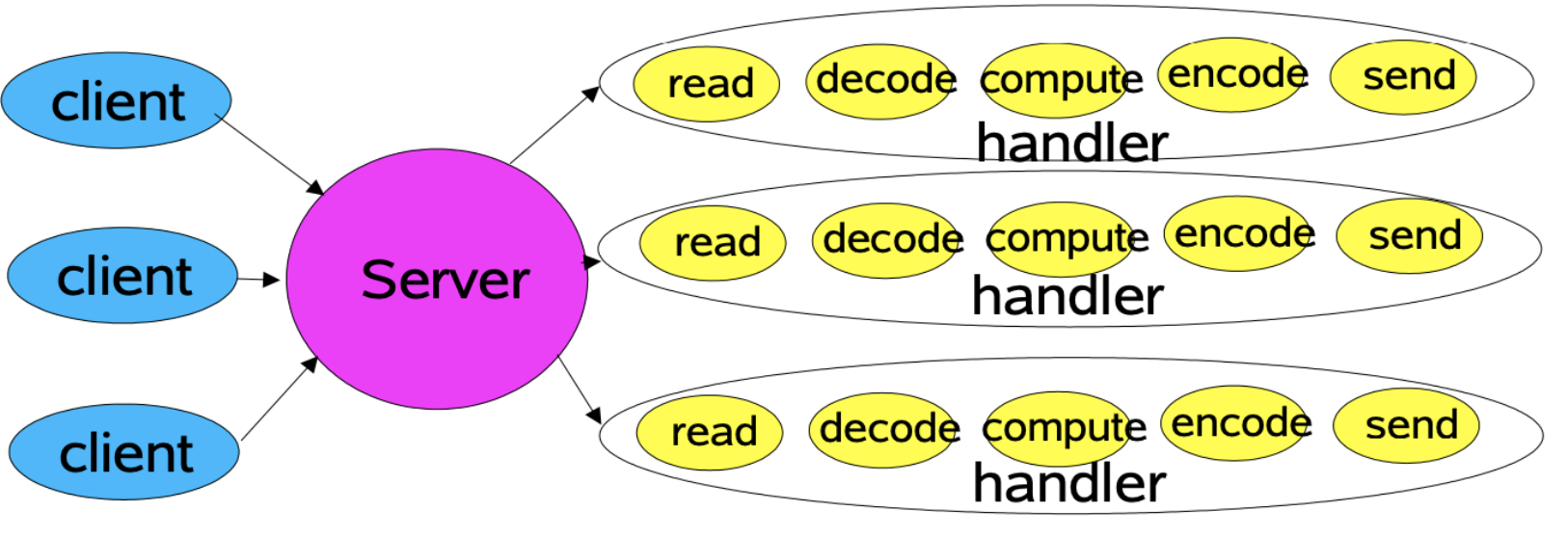
从上图中可以看出, 网络服务中的任务可以划分为:
Read request
Decode request
Process service
Encode reply
Send reply
而在不同类型的网络服务中,任务的性质和成本是有区别,例如:解析XML、传送文件、生成web页面、纯计算任务等等
C10K C10M问题
可扩展的目标
在网络服务中,我们会关注如下目标:
- 负载持续增加时可以优雅的降级
- 能够通过增加系统硬件资源(CPU, memory, disk, bandwidth),持续提升系统的处理能力
- 低延迟
- 能够满足峰值需要
- 可调优的服务质量
而在实现可扩展的目标时,最优的策略一般是分而治之
设计策略:分而治之
任务划分
把任务划分为更小的任务进行处理,每个任务的执行都是非阻塞的
事件触发
一个IO事件看作是任务执行的触发器
基本机制: java.nio的支持
非阻塞的读和写
监听事件, 把事件分发给事件关联的任务
变化的可能
基于事件驱动的模式
基于事件驱动的模式
Usually more efficient than alternatives
Fewer resources
Don’t usually need a thread per client
Less overhead
Less context switching, often less locking
But dispatching can be slower
Must manually bind actions to events
Usually harder to program
Must break up into simple non-blocking actions
Similar to GUI event-driven actions
Cannot eliminate all blocking: GC, page faults, etc
Must keep track of logical state of service
Reactor模式
Reactor是基于事件驱动的模式,常用于网络编程
在Reactor Pattern中的作用划分
Reactor
responds to IO events by dispatching the appropriate handler
Handlers
perform non-blocking actions
Manage
by binding handlers to events
Reactor论文
论文详情: An Object Behavioral Pattern for Demultiplexing and Dispatching Handles for Synchronous Events
Reactor论文的解决方案:
Solution
Integrate the synchronous demultiplexing of events and the dispatching of their corresponding event handlers that process the events. In addition, decouple the applicationspecific dispatching and implementation of services from the general-purpose event demultiplexing and dispatching mechanisms. For each service the application offers, introduce a separate Event Handler that processes certain types of events. All Event Handlers implement the same interface. Event Handlers register with an Initiation Dispatcher, which uses a Synchronous Event Demultiplexer to wait for events to occur. When events occur, the Synchronous Event Demultiplexer notifies the Initiation Dispatcher, which synchronously calls back to the Event Handler associated with the event. The Event Handler then dispatches the event to the method that implements the requested service.
下图是Reactor论文总结的基本结构
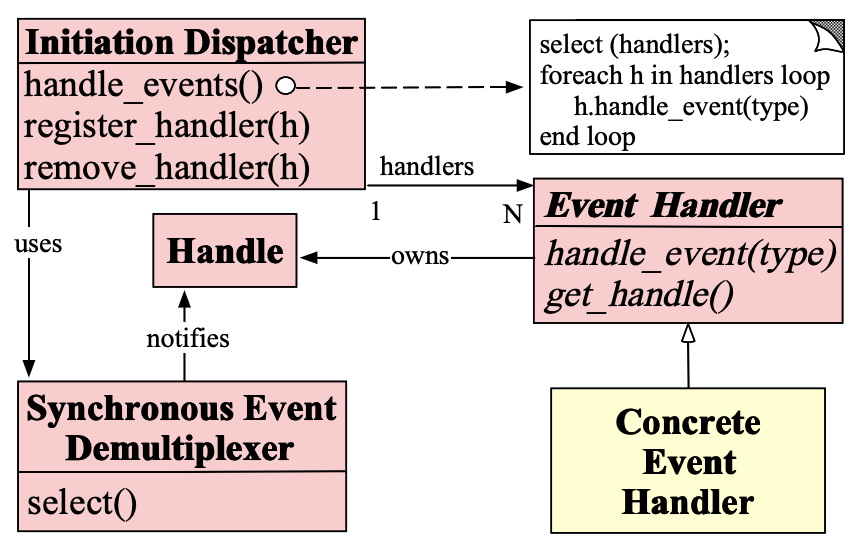
下图是Reactor论文总结的协作
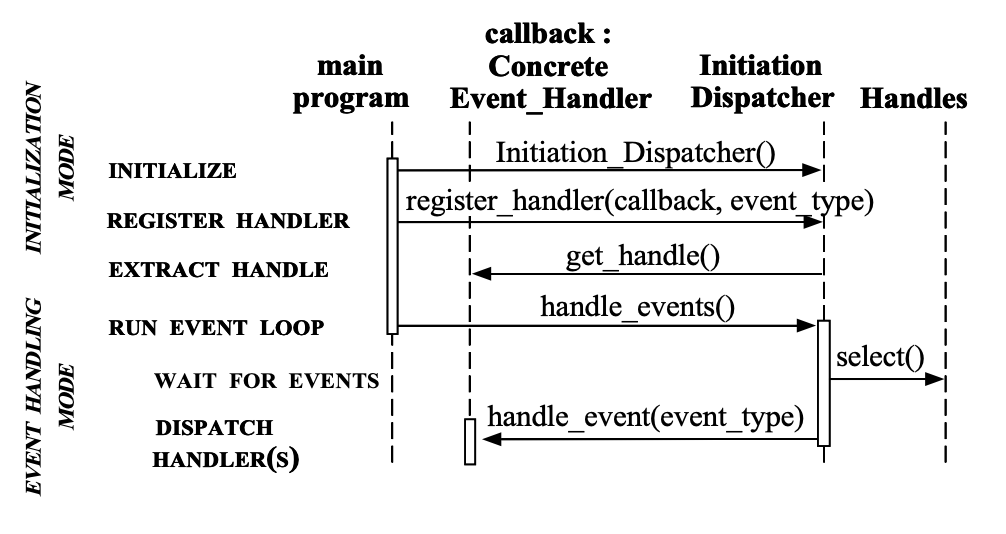
Reactor Paper Collaboration Scenarios
下图是Reactor论文的举例 : Client Connects to a Reactive Logging Server
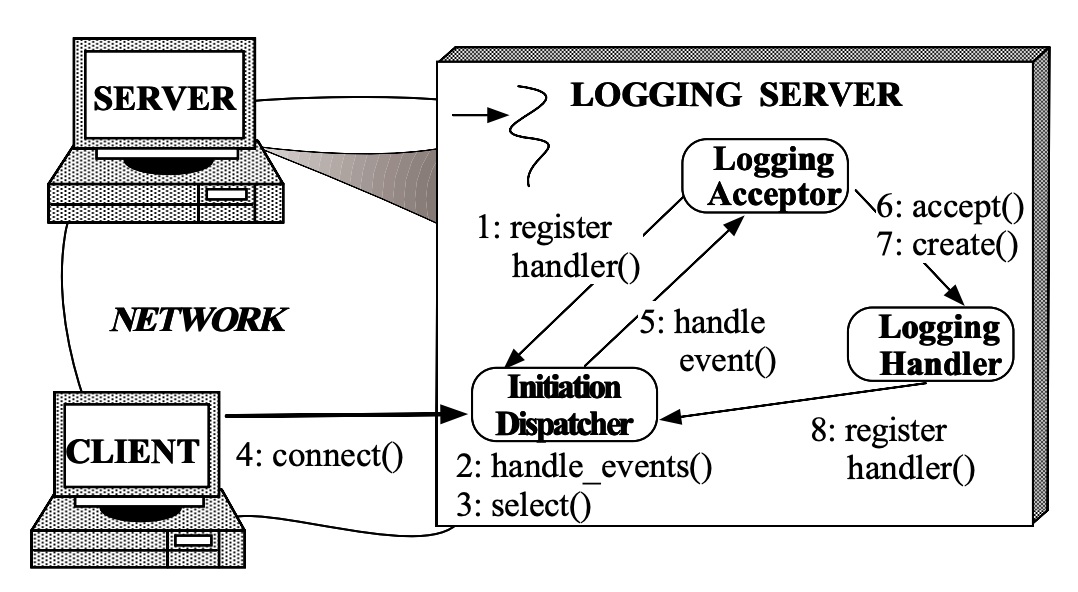
This sequence of steps can be summarized as follows:
- The logging server (1) registers the Logging Acceptor with the Initiation Dispatcher to handle connection requests;
- The logging server invokes the handle events method (2) of the Initiation Dispatcher;
- The Initiation Dispatcher invokes the synchronous event demultiplexing select (3) operation to wait for connection requests or logging data to arrive;
- A client connects (4) to the logging server;
- The Logging Acceptor is notified by the Initiation Dispatcher (5) of the new connection request;
- The Logging Acceptor accepts (6) the new connection;
- The Logging Acceptor creates (7) a Logging Handler to service the new client;
- Logging Handler registers (8) its socket handle with the Initiation Dispatcher and instructs the dispatcher to notify it when the socket becomes “ready for reading.”
下图是Reactor模式的举例:Client Sends Logging Record to a Reactive Logging Server

The sequence of steps that the reactive logging server takes to service a logging record.
- The client sends (1) a logging record;
- The Initiation Dispatcher notifies (2) the associated Logging Handler when a client logging record is queued on its socket handle by OS;
- The record is received (3) in a non-blocking manner (steps 2 and 3 repeat until the logging record has been received completely);
- The Logging Handler processes the logging record and writes (4) it to the standard output.
- The Logging Handler returns (5) control to the Initiation Dispatcher’s event loop.
Basic version
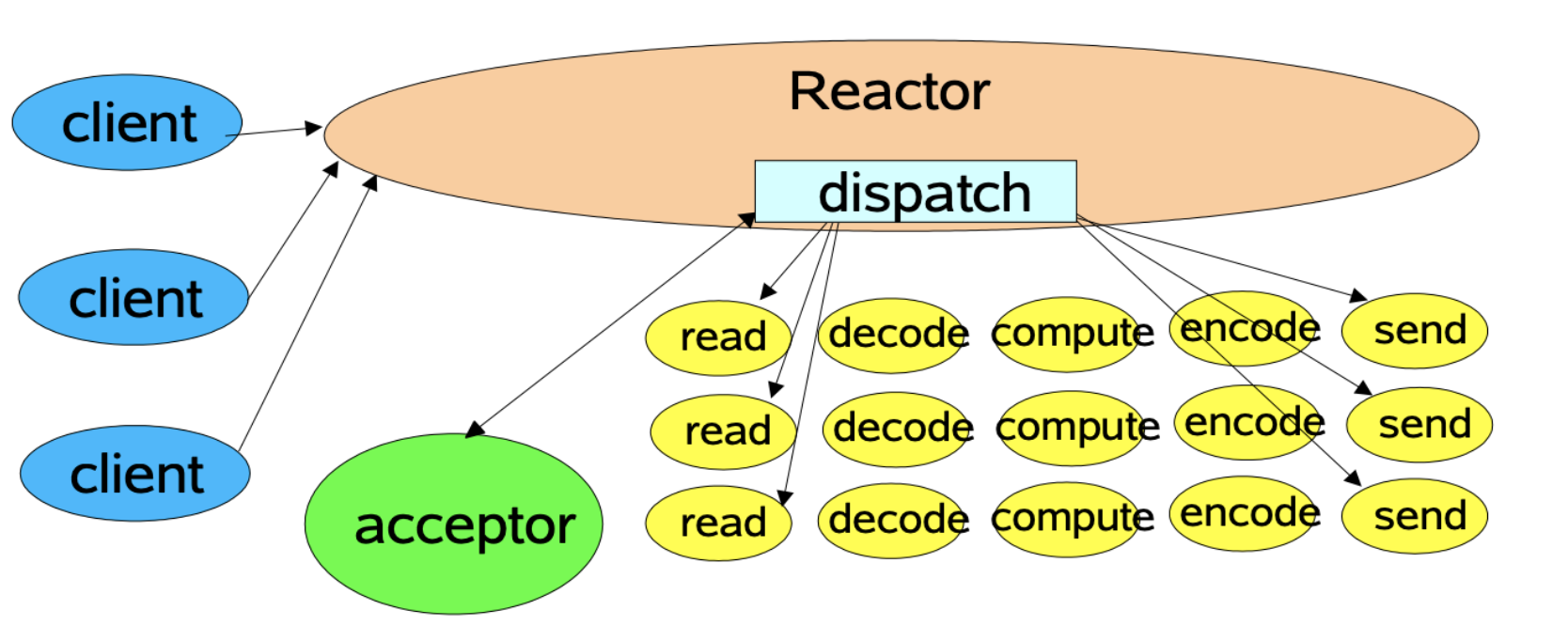
Multithreaded versions
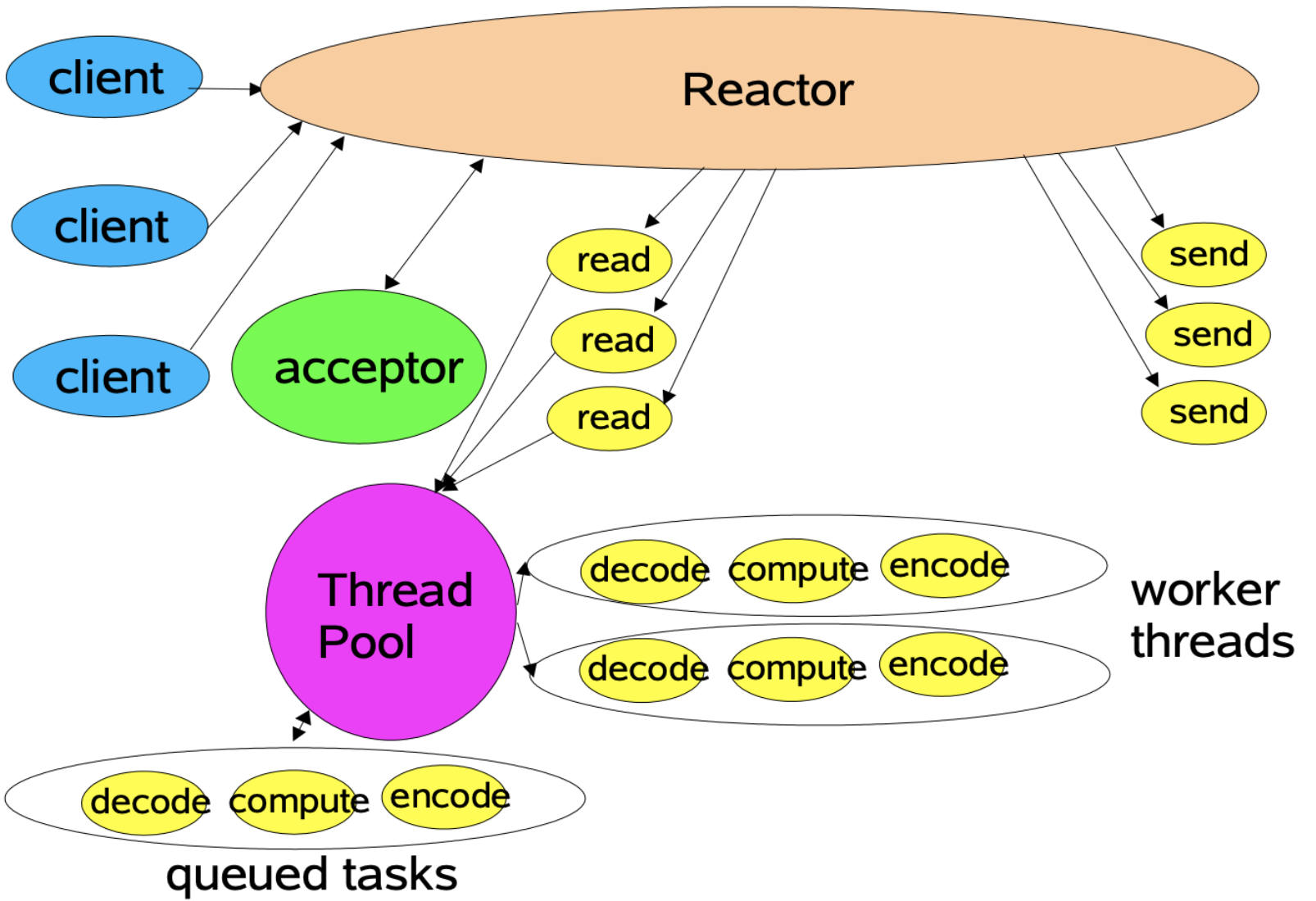
Using multiple reactors
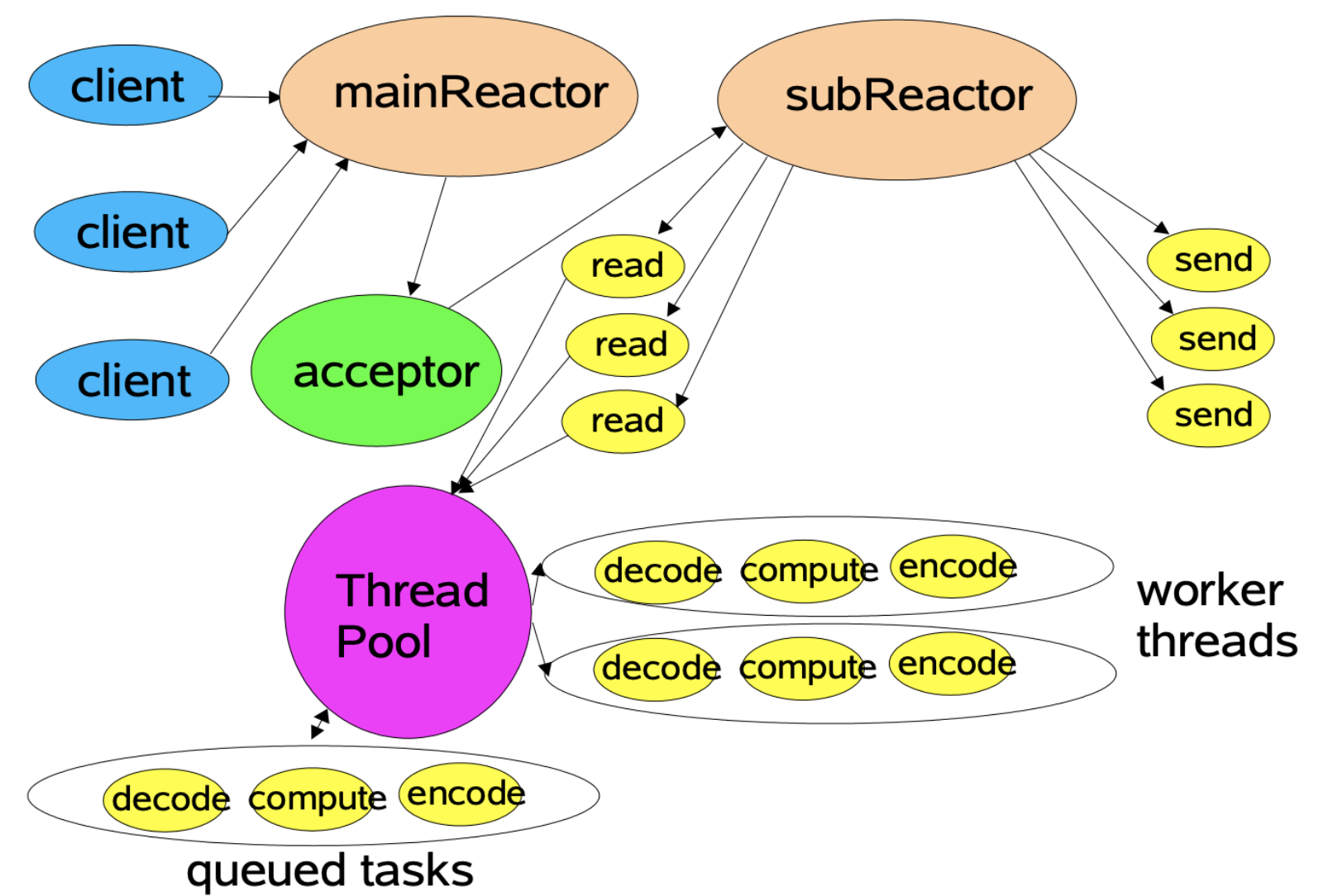
java nio
Doug Lea : Scalable IO in Java
java-nio原理是基于非阻塞同步IO模型(见于I/O模型), 解决的是IO执行的性能问题。
java nio的特性主要分为四大类:
Channel
Connections to files, sockets etc that support non-blocking reads
Buffer
Array-like objects that can be directly read or written by Channels
Selector
Tell which of a set of Channels have IO events
SelectionKey
Maintain IO event status and bindings
Api详情
Buffer
Buffer ByteBuffe r (CharBuffer, LongBuffer, etc not shown)

1 | abstract class Buffer { |
1 | abstract class ByteBuffer extends Buffer { |
Channel
1 | interface Channel { |
SelectableChannel
1 | abstract class SelectableChannel implements Channel { |
SocketChannel
1 | abstract class SocketChannel implements ByteChannel ... { |
ServerSocketChannel
1 | abstract class ServerSocketChannel extends ... { |
FileChannel
1 | abstract class FileChannel implements ... { |
Selector
1 | abstract class Selector { |
SelectionKey
1 | abstract class SelectionKey { |
代码样例
Client发送Ping, Server响应Pong